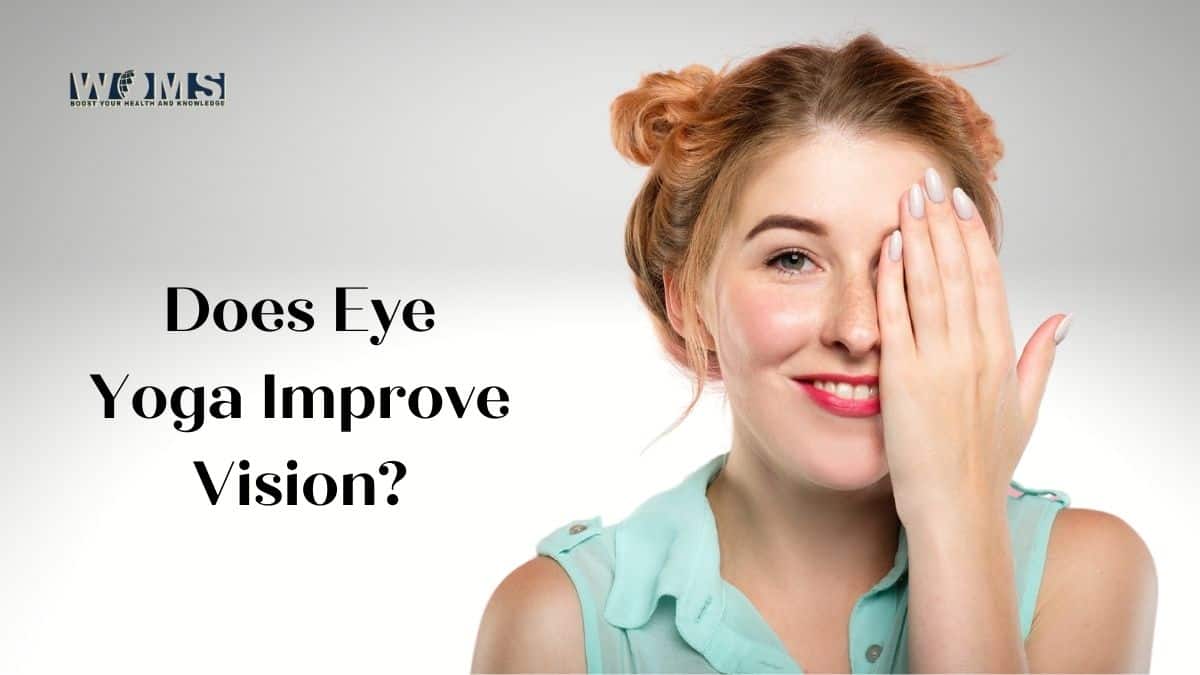Does Eye Yoga Improve Vision?

Eye exercises or eye yoga have been around for ages and claim to cure eyesight problems. These exercises might look tempting for people who wear glasses or contact lenses. After all, getting rid of those lenses without medicine or surgery sounds great, right?
While many people claim to have cured their vision problems through eye yoga, they lie in a tricky space between science and myth. If you are also wondering about the credibility of eye yoga, then read on.
Does Eye Yoga Really Work?
Most ophthalmologists don’t endorse eye exercises as means to cure vision problems. While there’s no harm in including them in your daily routine, solely depending on the exercises might make you overlook the extent of your eye problems.
If you are currently facing any eyesight issues, it is best to visit an ophthalmologist. Eye exercises might look like the cheaper option, but the eye exam cost is low in many clinics and gives access to better diagnosis and treatment.
While the claims of curing myopia and hyperopia may not be true, exercises can cure eye fatigue, strain, and irritation. A 2012 study on eye yoga for vision correction found no significant improvement in astigmatism and other eyesight problems.
Eye exercises actually work on the muscles that control eye movement. By moving them in a certain direction, you relax these muscles and reduce strain. It is beneficial if you read a lot, or work with computers, as your eyes spend a lot of time focusing on objects closer to you.
These exercises also help with a prevalent issue among youngsters, known as computer vision syndrome. It is a group of symptoms like dryness, redness, and eye irritation caused by focusing on a computer or smartphone screen for too long.
Research on computer users found a significant decrease in eye fatigue and visual discomfort among people who regularly practiced eye yoga. They may also help reduce dark circles and puffy eyes by improving blood flow around the eyes.
How to Exercise Your Eyes?
Unlike regular yoga, eye yoga is quite simple. You can do it on your office chair, work desk, or even your bed. It involves a few simple movements such as gazing at an object, rolling your eyes, blinking, etc. Some exercises also focus on breathing, which has a combined effect of reducing stress and eye-related headaches. So if you have spent a long day at the office, try these simple eye exercises.
Focus Shift
Staring at your screen for a long time can temporarily blur your far vision. Set your focus on an object far away, preferably 20 feet away from you, to fix this. Focus on it for 6-10 seconds, or until the object looks clear.
Next, shift your focus to an object placed close by. Repeat the process a few times until your eyes easily adjust to the distance change.
Gradual Focus
Extend your arm in front of your eyes and hold out your thumb. Focus on the thumb and gradually move it inwards towards your nose until it becomes blurry. Once again, extend your hands and repeat the exercise a few times.
Eye Rolling
Roll your eyes in a clockwise direction around ten times. Then, switch to an anticlockwise direction and roll it ten more times. You can also trace half circles with your eyes. The above exercise strengthens the eye muscles.
What Should You Know Before Doing Eye Yoga?
Even though eye exercises reduce strain and give temporary relief, they are not a replacement for vision correction. If you continue doing eye yoga without seeing improvement in your vision, you might worsen your eyesight. Without corrective measures such as glasses and lenses, you are forced to work with blurred vision, subjecting your eyes to additional strain.
Moreover, eye exercises aren’t suitable for all. Unless your doctor suggests, it is best to avoid them if you have undergone eye surgery, such as for a cataract. Since a new, artificial lens gets inserted in your eyes, they require time to heal. Exercising them too much might delay the healing process.
The Bottom Line
Eye yoga is popular but shouldn’t be treated as an alternative to professional treatment. Research suggests that eye exercises are a great way to rest and relieve your eyes, but there is no evidence to suggest that they aid in vision correction. Even though they are harmless, it is advisable to get your eyes tested by a doctor if you face any issues.




